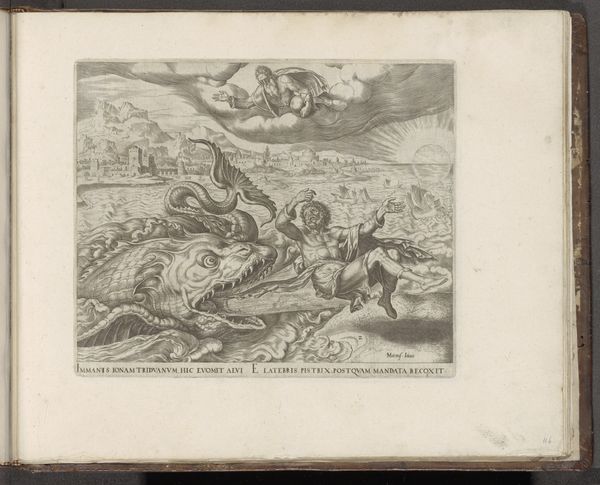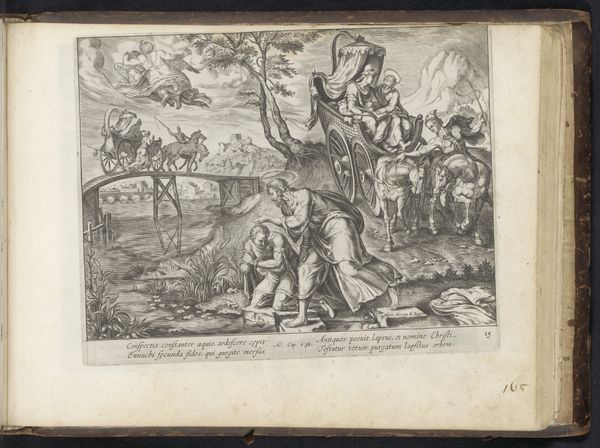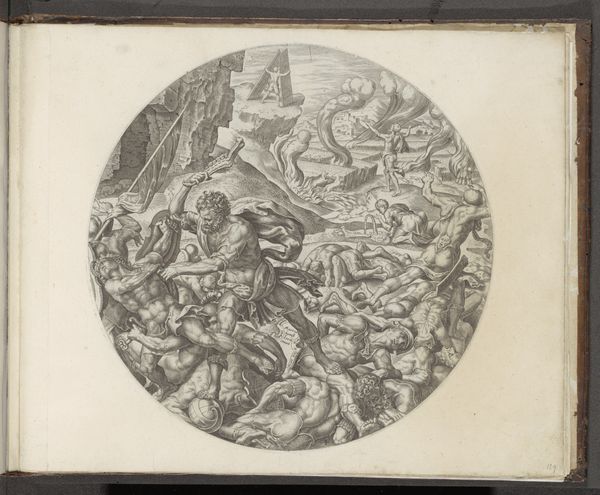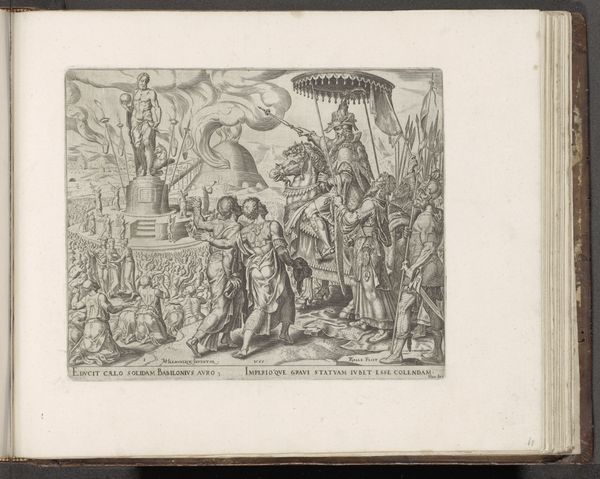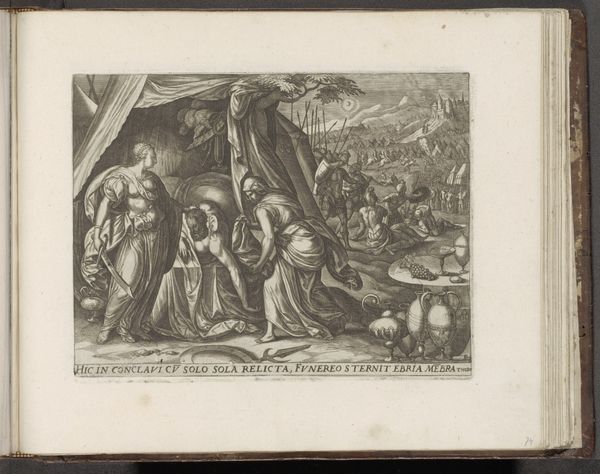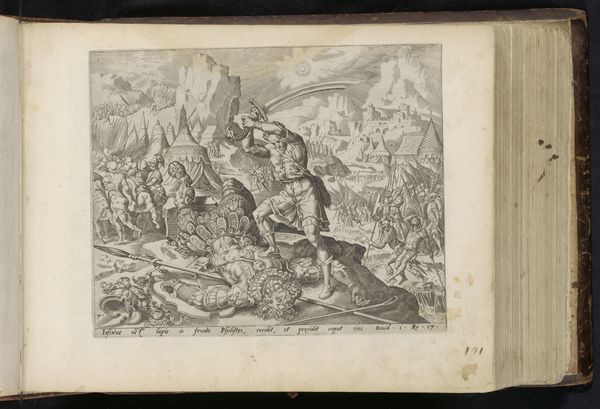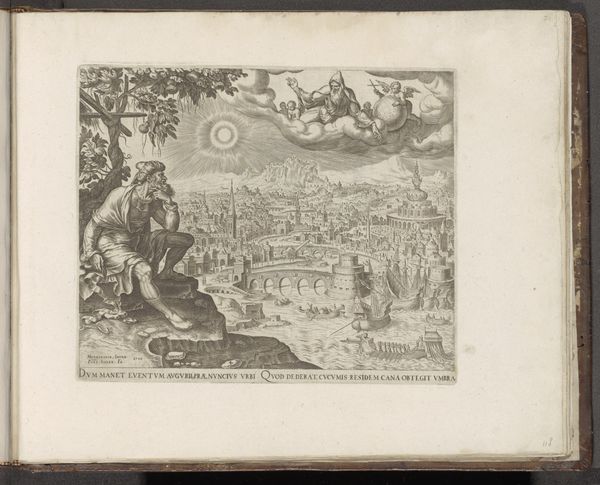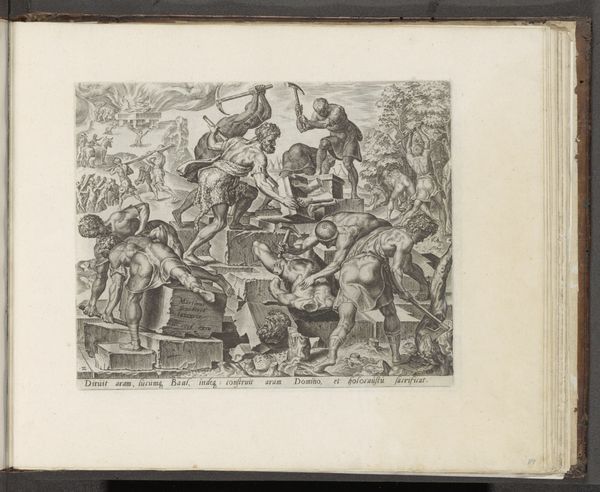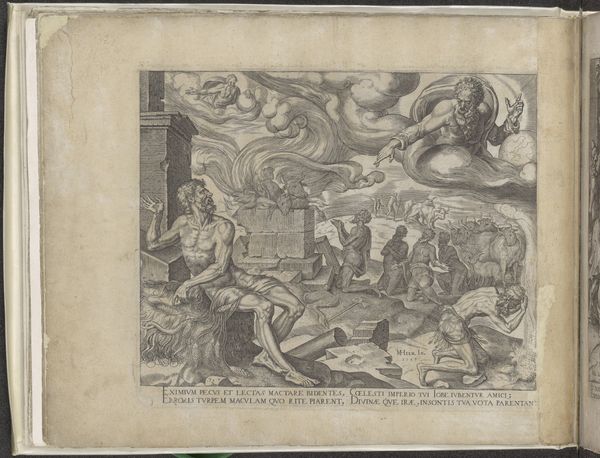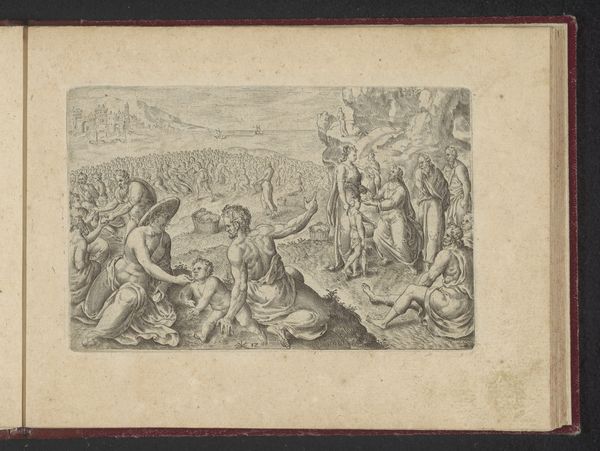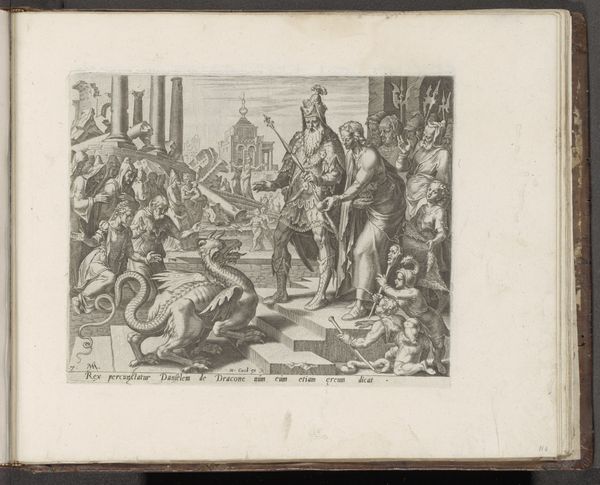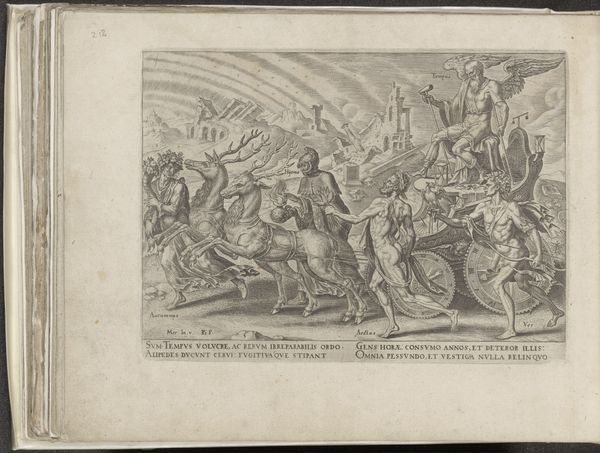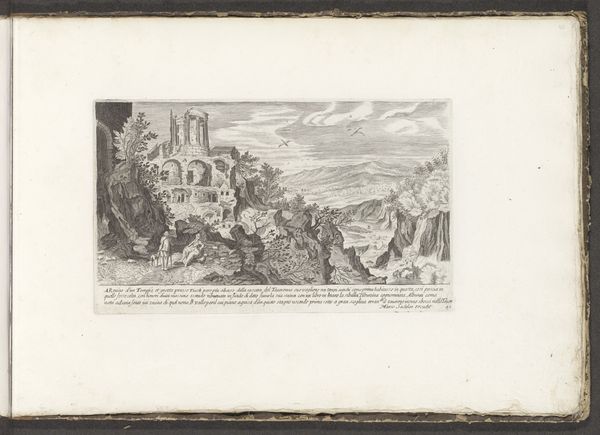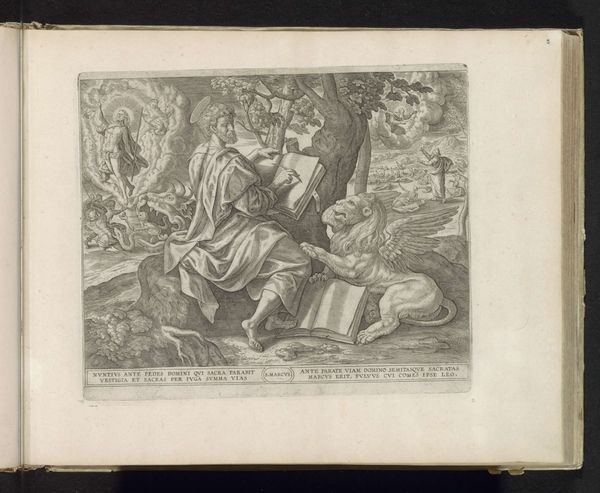
print, engraving
# print
#
form
#
line
#
history-painting
#
northern-renaissance
#
engraving
Dimensions: height 205 mm, width 247 mm
Copyright: Rijks Museum: Open Domain
Editor: Here we have Philips Galle's engraving, "God Commands Jonah to Go to Nineveh," dating from sometime between 1566 and 1579. It's quite striking how the artist uses line to convey the drama of the scene; you can almost feel the ship being tossed about. What aspects of the composition stand out to you? Curator: Observe the division of space. God and calm skies occupy the upper left, balanced by Jonah and the turbulent sea on the right. Galle employs a sophisticated interplay of line weights to define depth, thicker lines in the foreground anchoring the scene, and thinner, more delicate lines in the background creating atmospheric perspective. Note also the artist's conscious control over value; dark hatching defines areas of shadow and volume while negative space becomes the source of light. How does this structuring of light and dark contribute to your reading? Editor: It really does amplify the sense of drama. The sharp contrast almost makes the composition feel fractured, reflecting the turmoil in the narrative itself. Does the northern Renaissance context affect the balance between line and form? Curator: Precisely. Galle is engaging in Mannerist aesthetics through convoluted contrapposto, the bodies rendered through carefully observed musculature but with little interest in naturalism. See how God appears aloof, almost like a distant observer rather than an active participant. This creates tension between the divine command and human response. Does that resonate with your understanding? Editor: Absolutely. The rigid structure of God and Jonah in contrast with the ship, nearly swallowed by a roiling sea. This reinforces the sense of insignificance in the face of divine power. Curator: Precisely, and by dissecting the relationships of structure, form, line, and perspective within the image we arrive at a new level of understanding. Editor: I hadn’t thought of it that way, analyzing line as the subject; that's a great new way to think about Galle’s engraving. Thanks!
Comments
No comments
Be the first to comment and join the conversation on the ultimate creative platform.
